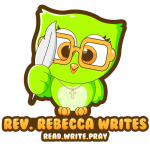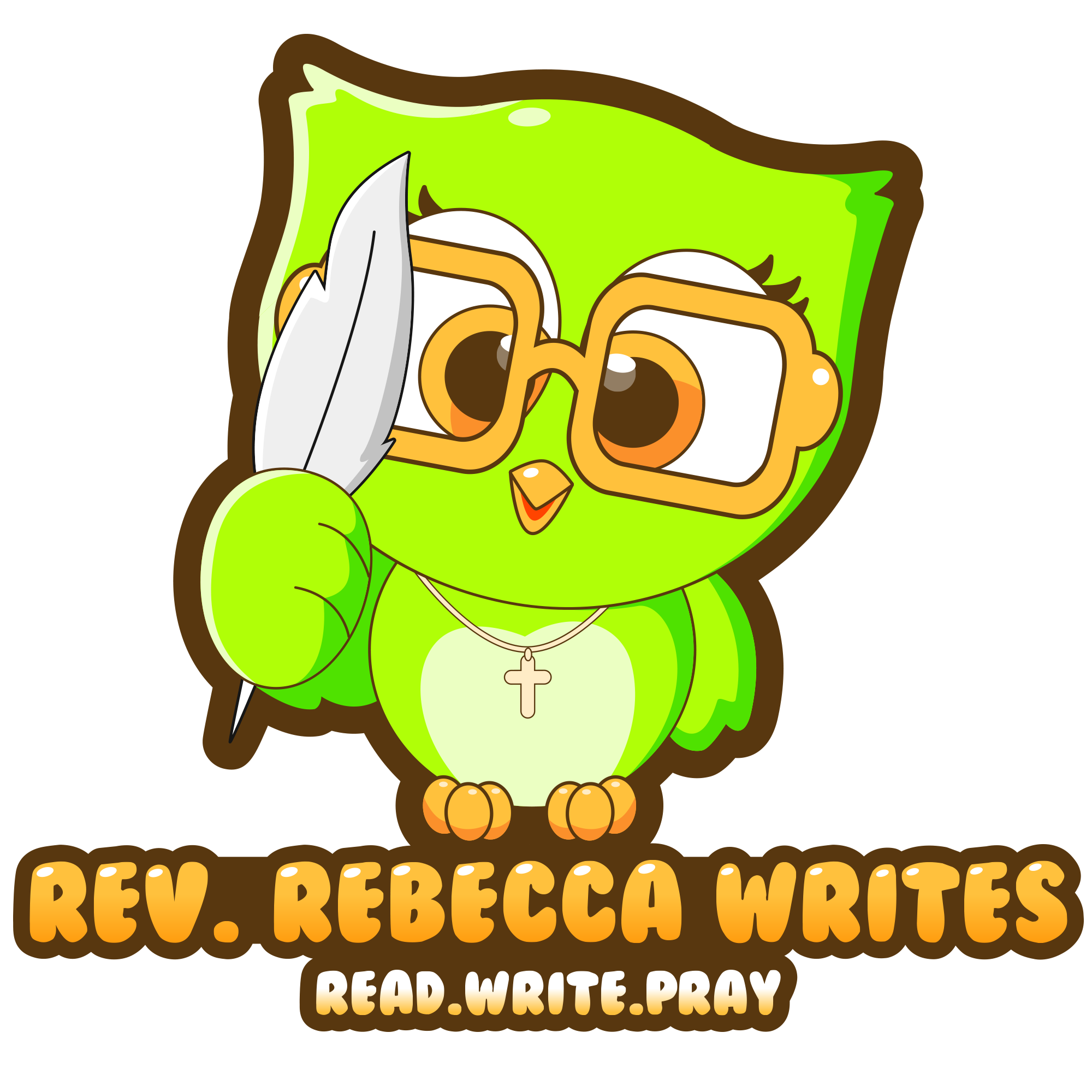This article was originally published in UM Insight on March 12, 2019. I am very grateful to UM Insight for giving me a voice and for distributing my article.
I am so passionate about the full inclusion of women, people of color, and people with disabilities in the church (especially the United Methodist Church in which I serve as an ordained elder in the Susquehanna Conference), that I wanted to reprint this article here on my personal blog. It seemed especially pertinent since Judicial Council will be meeting April 23-26, 2019.

Gender, Race, and Disability: The Aspects of Inclusion We Frequently Overlook
By: Rev. Rebecca L. Holland
Ever since the events of General Conference 2019, many people have been discussing the concept of inclusion, especially as it relates to members of the LGBTQIZA+ community. As a visually impaired Filipino-American clergywoman, I am grateful to see so much focus being placed on the topic of inclusion. However, I can’t help but notice that frequently a very important concept is being left out of the discussion: The idea of intersectionality.
An Intersectional Approach to Full Inclusion
The United Methodist Church has over twelve million members from 136 different countries. We are a global church, and as such, the concept of intersectionality becomes infinitely important.
An intersectional approach means that we realize that every person is unique and that no two people are the same. As such, we recognize every single person will have a unique experience of life.
There are many factors that impact how a person experiences the world. Some factors that impact the way a person experiences their life are:
-Age
-Gender
-Race
-Sexuality
-Disability
-Citizenship Status
-Country of Origin
To be truly intersectional means that we know that issues of inclusion are multifaceted and greatly nuanced. It also means that we recognize that although an issue might not impact us as individuals, we understand that same issue might impact other people and their life experience.
For example, a person doesn’t need to use a wheelchair to understand why accessible restrooms are important. Furthermore, you do not need to be a woman in order to be concerned about the fact that women still earn less than men.

True Inclusion Considers All Marginalized Groups
In order for us to be a fully inclusive church, it is important for us to consider how we can fully integrate people from all marginalized groups into the body of Christ. This includes not only members of the LGBTQIZA+ community, but also women, people of color, and people with disabilities.
Let us take a moment to consider some troubling statistics regarding marginalized groups:
-People with disabilities are less likely to attend worship services (Grcevich, 2016).
-One study found that more than half of parents with children with special needs reported that their child had been excluded from a worship service (ibid)
-Sunday morning remains the most segregated time in American society (Klagge, n.d.)
-In the United Methodist Church, “racial-ethnic clergywomen are still less likely than white women to experience acceptance and support from their congregations and their supervisors (Burton, 2014).”
-In the United Methodist Church, the number of women who leave ministry in the local church due to “lack of support from the hierarchical system” has increased (ibid).

Some Questions to Consider for a Fully Inclusive Church
As a global church, it is important for us to take a worldwide view of all aspects of God’s kingdom. We must be concerned about the treatment of our LGBTQ brothers and sisters all over the world, but we must also ask ourselves:
-How are we serving all marginalized communities?
-How are people with disabilities treated in the United States and in other countries? Do they have access to education and job opportunities? Are they being fully integrated into the life of the church?
-How are women and girls treated in the United States and other countries? Do they have access to education and job opportunities?
-What is life like for women, people of color, and people with disabilities who aspire to be preachers, teachers, and church leaders in our central conferences?
What Does a Fully Inclusive Church Look Like?
During such a time as this, it is important that we know when to make space for leaders, writers, and preachers from marginalized groups and that we do not drown out the voices of the marginalized with the voices of the privileged majority. There is a time to speak and a time to listen.
Right now, the struggle of inclusion is focused on the struggle of the LGBTQIZA+ community. It is good that we are taking time to consider issues of inclusion; however, the conversation must not stop with LGBTQ issues. It is my hope that these discussions will inspire us as a global church to take an in-depth look at our treatment of all marginalized peoples.
The United Methodist Church is a truly connectional church and all of these issues are intertwined and interconnected. Last month, I wrote to UM Insight and asked you to please consider the impact that each plan offered at General Conference would have on women, people of color, and people with disabilities.
Today, I ask you to continue to consider the ways in which the Traditional Plan may impact women and marginalized people. It is hard to say anything definitively until the Judicial Council makes their ruling in April, but I encourage you to keep all aspects of these issues in mind as we consider how to best move forward.
Whether you self-identify as progressive, conservative, or somewhere in between, let us all work together to mirror God’s fully inclusive Kingdom here on earth until Christ comes again.

About the Author:
Rev. Rebecca L. Holland (B.S. English Education & M.Div.) is an ordained elder and the chair of the Disability Ministries Task Force of the Susquehanna Conference. She is a member of the Order of St. Luke and the pastor of Christ Community United Methodist Church in Altoona, Pennsylvania. She blogs about faith and disability awareness (as well as her love of books) at BeckieWrites.com
Sources:
Grcevich, Stephen. (2016 February 9). “What are the stats on disability and church?” Key Ministry: A Church for Every Child. Retrieved from: https://church4everychild.org/2016/02/09/what-are-the-stats-on-disability-and-church/#_edn5
Klagge, James C. (n.d.) “The Most Segregated Hour in America?” Virginia Tech. Retrieved from: https://www.phil.vt.edu/JKlagge/ConductorChurch.htm
Burton, M. Garlinda. (2014, March 20). “Women pastors growing in numbers.” The United Methodist News Service. Retrieved from https://www.umnews.org/en/news/women-pastors-growing-in-numbers
If you found this article helpful, you may also enjoy my interview with the author of Thriving Blind and TEDx Speaker, Kristin Smedley or the great articles in CAPTIVATING, a free monthly magazine that showcases the the achievements of people with disabilities.

Join me in my mission to make the church and the world more accessible! Please Subscribe to my blog so that you never miss a post!
You can also connect with me on Twitter and Instagram!



I[‘m impressed that you are doing this work. I am blind and have moved in and out of several communities of faith, mostly within the ELCA. I was once a “differently abled” deligate to the national convention of the Women of the ELCA, and wrote a pamphlet on being more inclusive of people with disabilities (this was back in the ’90s. I am outside the fold at this point in my life. I just can’t stand the dances people do when they’re in church and trying to be real Christians for an hour. I think it’s going to be a long struggle for people with vision loss in particular. Keep fighting the good fight.
LikeLike